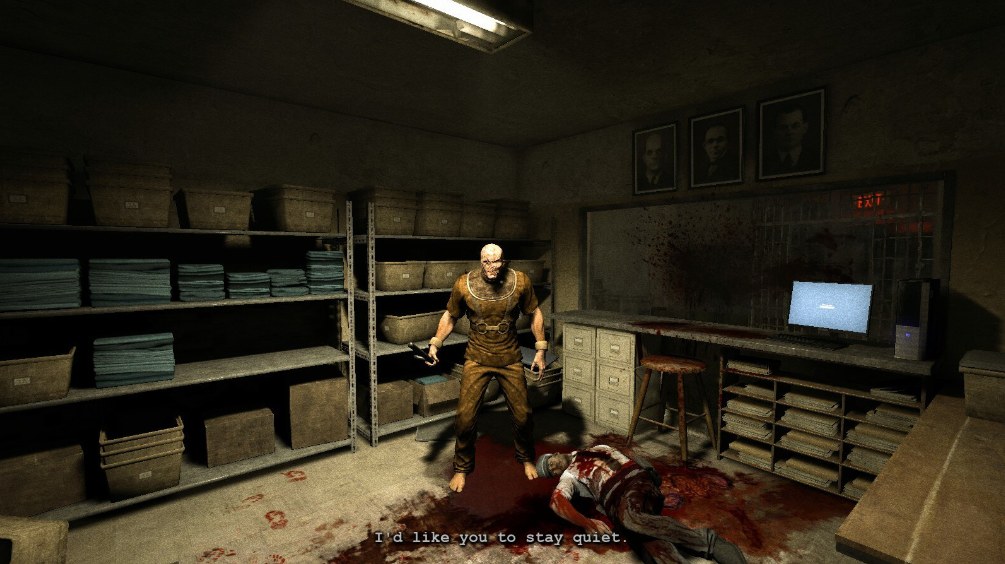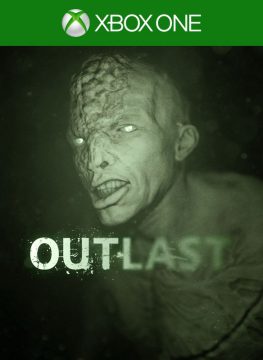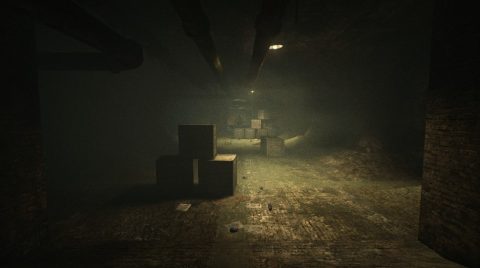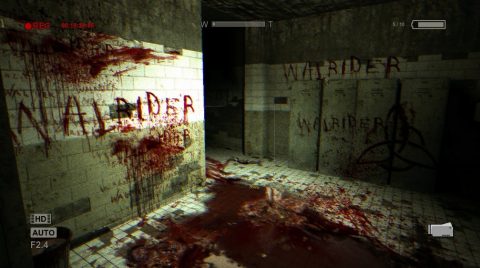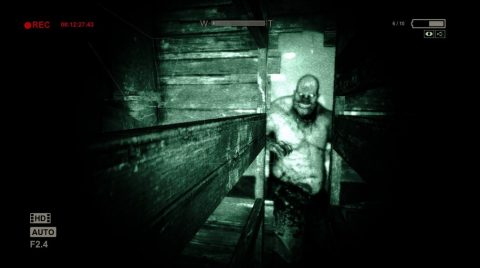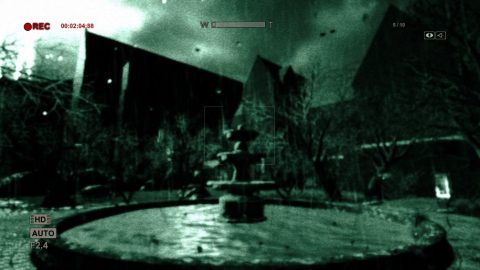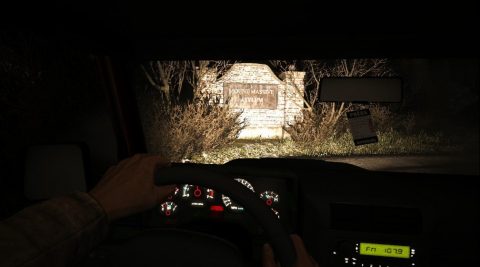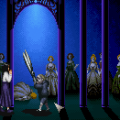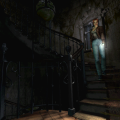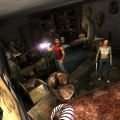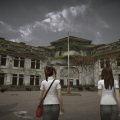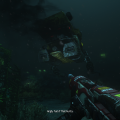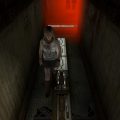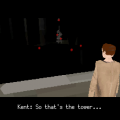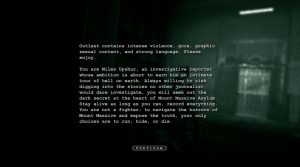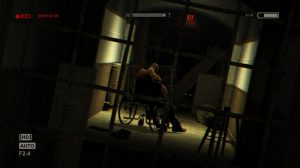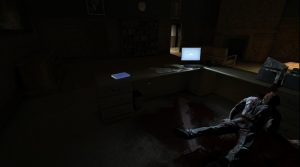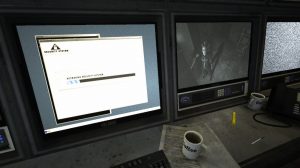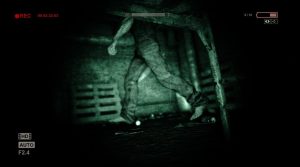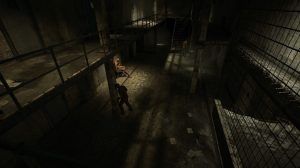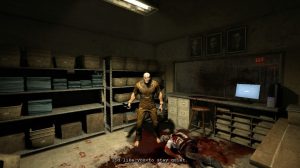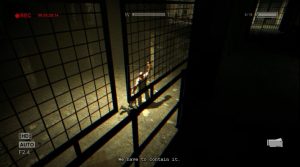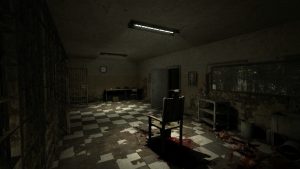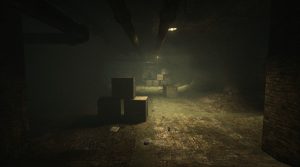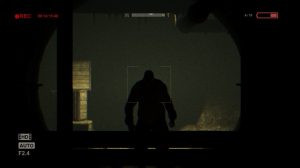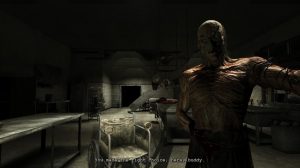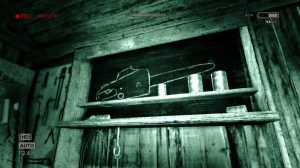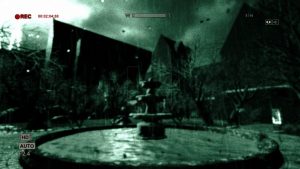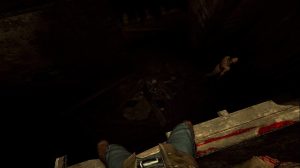Outlast is a game you could certainly describe as a guilty pleasure. A survival horror game set in an asylum for the criminally insane is hardly original, the game leans more towards ‘scary man jumps out, says boo!’ than genuine psychological horror, the tense atmosphere the game does create is interrupted by cheap jump-scares that occur a little too much for my liking, and the plot is little more than a relatively uninspired justification for the unpleasant series of events comprising the four-to-five-hour experience. And yet, despite the clichés, Outlast comes highly recommended by many, because the tropes it employs might be unoriginal, but they’re also so refined and perfected that Outlast might be the best there is at what it does. But what it does isn’t very nice.
Released in 2013, Outlast is the debut title from Red Barrels, a Canadian developer founded by Philippe Morin, David Chateauneuf and Hugo Dallaire, who each had over a decade of experience at Ubisoft Montreal, having collectively worked on entries in the Assassin’s Creed, Uncharted and Prince of Persia: The Sands of Time series. It’s hardly surprising then that they were more than capable of creating a successful game, although it is a little odd that having worked on some of the most critically-acclaimed third-person action-adventure series in the industry, their vision was a first-person survival horror game. Outlast also incorporates plenty of stealth, however, which probably was helped by Chateauneuf’s experience working on the Splinter Cell franchise.
Outlast opens with investigative journalist Miles Upshur (presumably without a paddle) making a tense drive to Mount Massive Asylum. He’s received an anonymous tip from a whistleblower who worked for two weeks as a software engineer at Mount Massive, and was horrified by what he saw. “Terrible things happening there. Don’t understand it… People are being hurt and Murkoff is making money. It needs to be exposed.” And so, armed with nothing but his trusty camcorder – which has a night-vision mode, at least – and a handful of batteries, Miles sneaks into the asylum in an attempt to uncover the truth.
A slower-paced game might take the time to gradually increase the uneasiness of the player by dropping a few sparse hints that something is amiss, letting their imagination run wild until a dramatic reveal. Outlast is not this game, and within three minutes of entering the asylum, Miles has already discovered a library full of freshly-killed staff members and decapitated heads, one of Murkoff’s private military contractors who has been impaled upright on an iron pole and remains alive just long enough to tell Miles that the patients have all escaped, and he needs to “get the f*** out of this terrible place” before dying, and met a hulking ogre-like man who calls him “little pig” before throwing him through a first-floor window and down to ground-floor reception. Having definitively confirmed using his sharp journalistic insight that something is, in fact, wrong, Miles’ primary goal quickly changes from uncovering the asylum’s secrets to getting the hell out of there; an objective which he finds repeatedly thwarted by fate, bad luck, and the patients themselves, referred to a ‘Variants’.
This brings us to the moment-to-moment gameplay, which in Outlast can always come under three categories. The first, and most common, are the brief-feeling reprieves where you are actually completely safe and nothing can harm you… not that the player knows that. The second are the stealth sections where you need to reach a room or grab an item needed to progress, while an enemy stalks the area, hoping to introduce you to their friend, Mr. Big Bloodstained Chunk of Debris. The third are the chase sequences, some of which are unavoidable setpieces, and some of which can occur if you aren’t careful avoiding any patrolling variants, some of whom are remarkably determined to catch you, especially recurring villains who appear in multiple chapters.
Miles is a lover, not a fighter, so your options in these situations are always to run, hide, or die. Running is risky if you don’t know exactly where you’re going, and the decrepit corridors aren’t exactly well-signposted, but hiding doesn’t guarantee your safety either. If your pursuer saw you enter a hiding spot, they will drag you out of it and introduce you to their other friend, Mr. Punchy Fist. If you escaped their line of sight before hopping into a locker or under a bed, they might still find you anyway if they’re determined enough to keep looking. Miles remains unarmed for the entire experience, a decision which was inspired in part by the success of Amnesia: The Dark Descent.
Miles may be defenseless, but he certainly isn’t helpless though, and the night-vision function on his camera is invaluable to your survival. Your pursuers are viciously stubborn and excellent at detecting you if your footsteps are too loud or you get too close, but they still can’t see in the dark, and you can. Temporarily at least, until the batteries for Miles’ camera run out, leaving you in roughly the same state, although the night-vision still works a tiny bit just to ensure that you’re not completely blind. Batteries can be found throughout Mount Massive Asylum too, and while the priority is making sure that the player is never too short of them, even on higher difficulties, the developers also made the effort of placing them near radios or discarded walkie-talkies so as not to break the immersion too much.
So, on top of dealing with the many people actively trying to murder you, Outlast also throws the tiniest bit of resource-management at you, just to make sure you’re not getting too comfortable at any time. The decision of leaving an area that you’ve designated as safe in order to do a quick check for batteries – or just pausing in the middle of a chase because you think you saw something glinting on your camcorder, and an extra battery might be worth the hit you’ll take from the pursuing variant – is always a difficult one, although batteries aren’t the only reason that you might be tempted to explore, as Miles can also find documents and record events that he will transcribe into notes that range from terrified to sarcastic to cautiously curious.
Miles Upshur has a voice actor, but no actual lines in the game – the voice actor is mainly just for screams of panic or pain, and the occasional ‘Hup!’ as he parkours over a desk – so these notes are the primary source of his characterization, which sounds a little bit weak for the protagonist, but it really isn’t, because Miles is just the best. He might not be the most realistically-written audience avatar, but his noted reactions to the veritable mountain of bizarre, disgusting and often painful situations he finds himself in are consistently entertaining in a variety of ways, and they do a good job of highlighting how over the course of the game, he reluctantly finds himself drawn back to the issue that led him to Mount Massive Asylum in the first place; uncovering the truth of what’s actually happening there.
The documents Miles can find are a little more hit-or-miss, although they’re certainly easier to collect; obviously glowing, even in the dark, whilst notes need to be collected by Miles filming the event or location he’s reacting to, some of which can be permanently missed. Every notable pursuer in the game has a patient report that delves into their backstory, and some of these are genuinely fascinating, whereas others are just quick bursts of black comedy, like the report from Rick Trager, former Murkoff executive turned patient turned variant, who refers to killing his victims as “slimming back personnel” and ends with the optimistic “I was on the fence about it before, but now I can say with absolute certainly that a person can’t live without his kidneys. You learn something new every day.”
Where the documents may lose you somewhat is when they – and the main plot itself – begin to lean a little more into jargon that could reasonably be described as technobabble. Obviously, there is a reason why so many patients of the asylum have become so violent, but when the report attempting to drop hints about this opens with ‘Morphogenic Engine Test Run X364RCT42C for Patient ZYX8675309’ then your brain may have already switched off. It doesn’t grab the attention quite as much as the executive talking about removing someone’s kidneys, which is a shame as these documents are the primary source of Outlast’s surprisingly extensive lore.
Most of Outlast’s lore is centered on the recurring villains you’ll encounter, and if there’s one thing Red Barrels excelled at, it was creating memorable villains with uniquely unsettling personalities and mannerisms. The aforementioned Dr Trager remains calm, jovial and affable, never failing to chummily address you as “Buddy!” even as he’s cutting two of your fingers off. Then there are the Twins, aka the creepy naked twins, fondly referred to by the fan community as ‘The Donger Brothers’, who speak in a flat monotone about wanting to kill and eat Miles. And then there’s Chris Walker.
Chris Walker – the hulking figure who throws Miles through a window near the start – is the most persistent antagonist in the game, and easily the most notable. An ex-soldier initially admitted for treatment related to PTSD, Chris will hunt you all over Mount Massive Asylum, rasping cryptic threats and murmuring distorted military protocol terms. The tell-tale signs that he’s nearby are the rattles of the sizeable chains on his arms and legs, his leitmotif (featuring the most terrifying of all instruments, the tuba) and the unexpected separation of your head from the rest of your body.
With all of this unapologetic gore, assault, and general nastiness, it’s clear that Outlast is trying to replicate the feel of a particularly violent B-movie from the early 80s; there’s even an explicit Evil Dead 2 reference thrown in, and the developers have cited several found-footage horror films as influences, in particular the Spanish film REC, and its American remake Quarantine. Because of this, it feels more like an intentional homage to the grindhouse-era of films rather than anything actually exploitative, although this doesn’t make its portrayal of the mentally ill as violently insane psychopaths any more tactful.
To its credit, the plot of Outlast contains a detailed justification of exactly why so many of the patients you encounter are so… stabby, and it extremely explicitly lays out that the unfortunate patients of Mount Massive Asylum were specifically chosen because people are less likely to ask questions about the wellbeing of the certifiably insane. This point is hammered in excellently in a speech from a variant known as ‘The Pyro’, who Miles encounters in the blazing cafeteria, patiently waiting to burn to death. “Murkoff took so much from us. Used us. Turned us into these things, because nobody cares about a few forgotten lunatics.” A surprisingly poignant message from a game that two chapters prior, tried to jump-scare the player with the scene of a patient trying to have his way with a headless corpse.
While the jump-scares feel amateur, the overall horror of being trapped, defenceless, in an expansive asylum filled to the brim with people trying to kill you is a formula that – while not the most original – is almost impossible to screw up, and Red Barrels certainly didn’t. The brilliant soundtrack from Samuel LaFamme, while unfortunately mostly-restricted for chase scenes, will keep your heart pounding throughout, and while the plot doesn’t have many twists per se (it’s no surprise that Murkoff might be the bad guys here,) it’s still an entertaining journey.
Upon its release, Outlast quickly captured the attention of long-time survival horror fans, lore-heavy psychological horror devotees, and the entire YouTube jump-scare economy, and it isn’t hard to see why. It might not be the most intelligent thing you’ve ever played, but if you want to play a camp, gore-laden throwback to the B-movie horror genre, Outlast is the best version of itself that it could possibly be.
